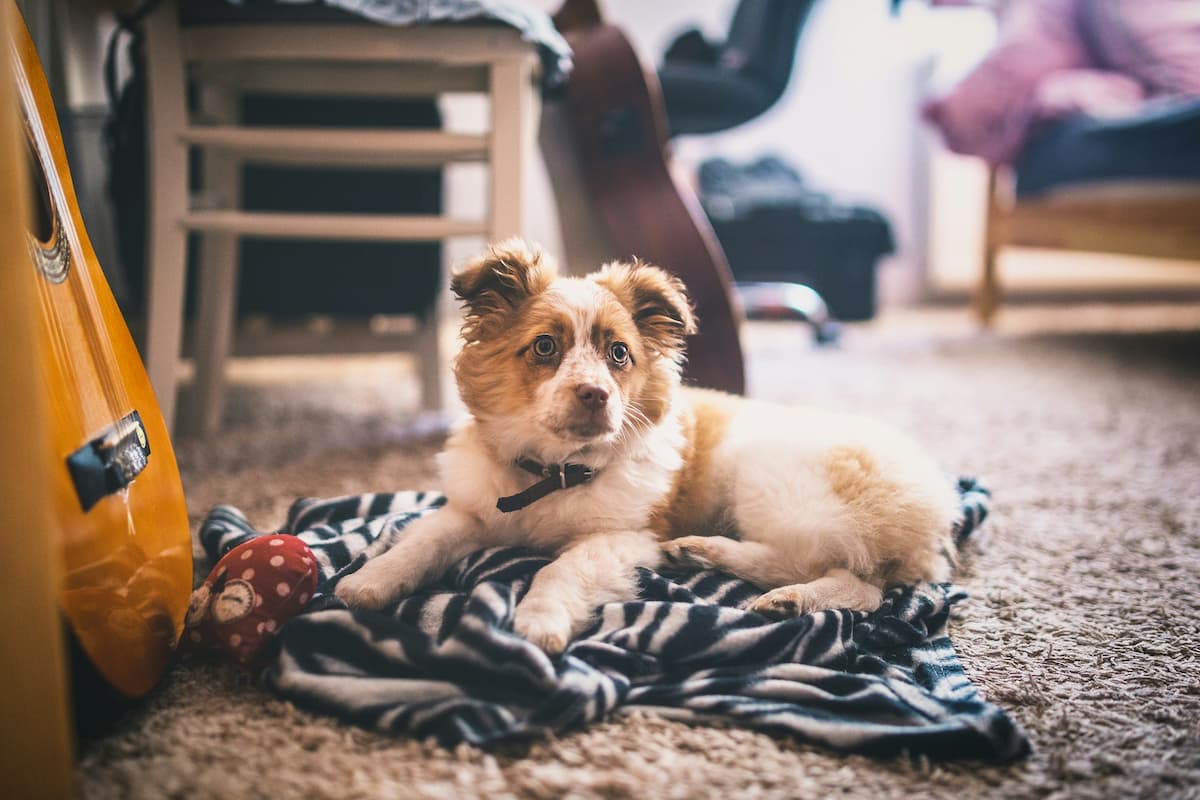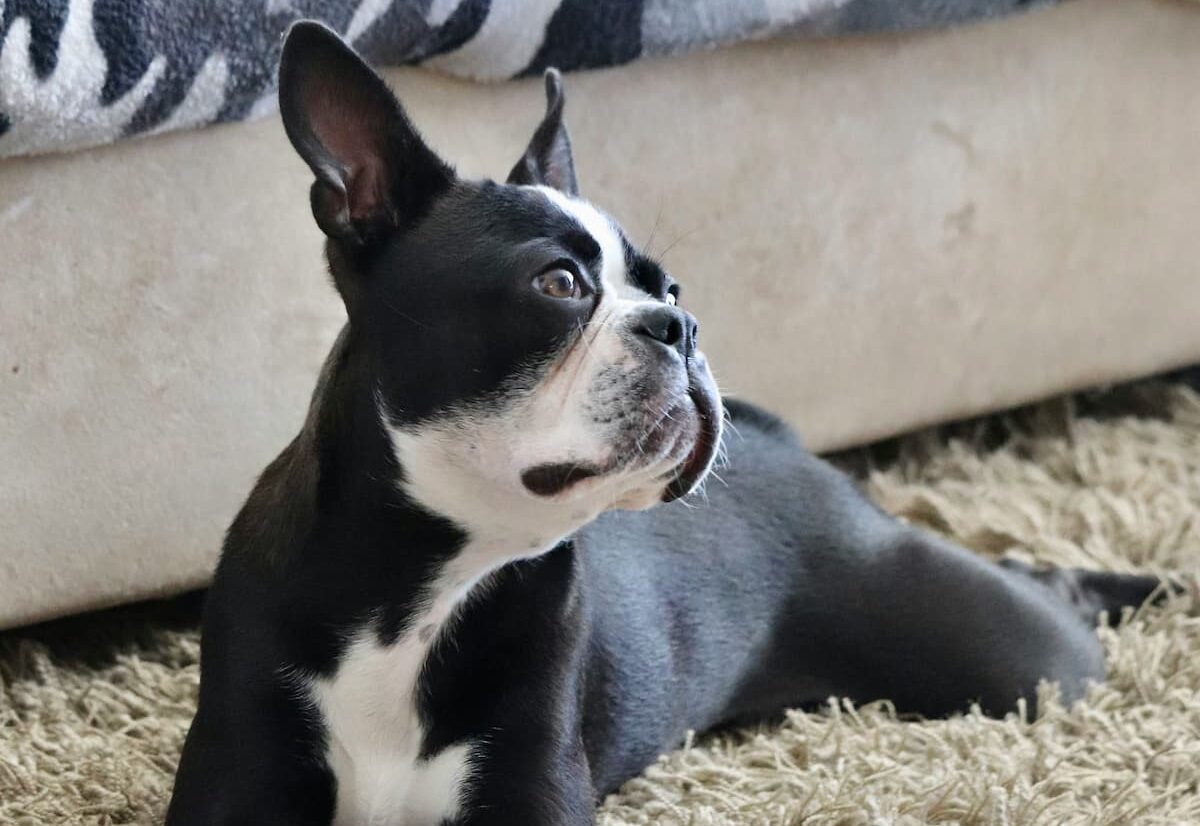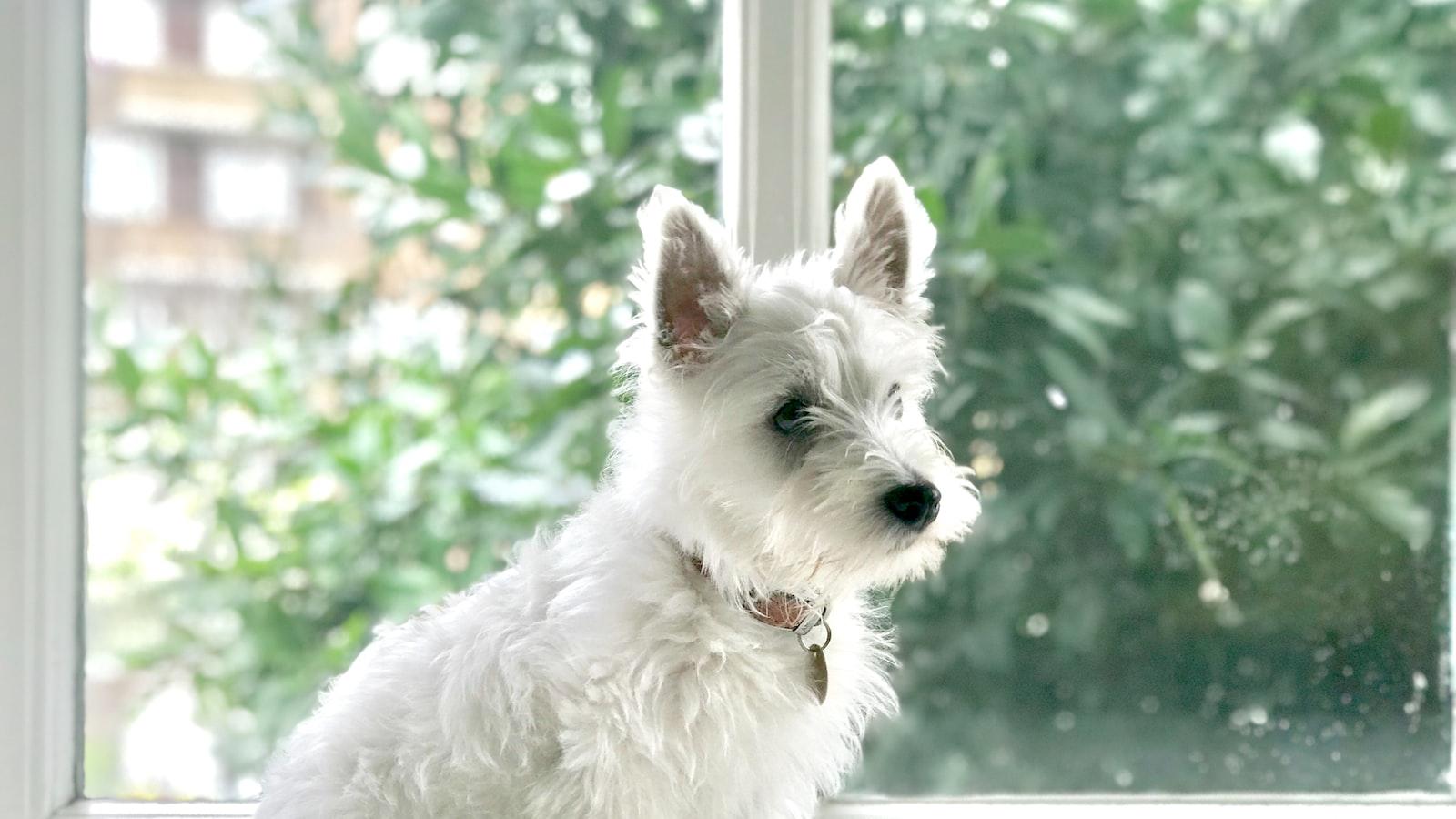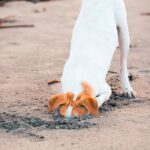Have you ever noticed your furry companion dragging their rear end on the carpet?
It’s a peculiar sight, isn’t it?
Well, let me tell you, my friend, there’s more to this hilarious dance move than meets the eye.
Picture this: a perfectly innocent pup peacefully lounging on your luxurious carpet, and out of the blue, they start scooting like they’re auditioning for the newest dance reality show.
You can’t help but wonder, “Why on earth is my dog scooting on the carpet?”
Read to have your question answered.
Why Do Dogs Scoot on the Carpet?
So, you’ve probably seen it before – your furry friend dragging their behind across the carpet, leaving you puzzled and slightly amused.
But what exactly is going on when dogs scoot on the carpet? Turns out there a variety of reasons behind this strange habit:
1. Anal Gland Relief
Believe it or not, one of the primary reasons dogs scoot on the carpet has to do with their anal glands.
These tiny sacs, located on either side of your pup’s anus, produce a pungent liquid that helps them mark their territory and communicate with other dogs.
However, when the anal glands become impacted, it can lead to discomfort and irritation, causing dogs to scoot to alleviate the pressure.
By dragging their hindquarters across the carpet, they may help release and empty the glands, providing temporary relief.
There are a few reasons why anal gland issues may arise, and although they can seem like a pain in the rear (literally), they are typically easily treatable.
Here are some common culprits behind your dog’s carpet scooting:
Dietary Factors: Your dog’s diet plays a vital role in their overall health, and it can also affect their anal glands.
Dogs with a poor diet, lacking in fiber or essential nutrients, may have trouble producing firm stools.
This can result in the glands not being properly stimulated during bowel movements, leading to clogs or inflammation.
Breed Predisposition: Certain dog breeds, such as Bulldogs, Cocker Spaniels, and Poodles, are more prone to anal gland issues than others.
This may be due to their genetic makeup or specific body structures.
If you happen to own one of these breeds, it’s important to keep an eye out for any signs of discomfort or excessive scooting.
Hygiene Matters: Proper anal gland hygiene is essential to prevent issues.
Dogs that don’t receive regular grooming or have excessive hair around their hindquarters may experience anal gland problems.
The hair traps bacteria and can obstruct the glands, leading to scooting.
2. Itchy Bottom
Another common culprit of dog scooting is an itchy bottom. Just like humans, dogs can experience irritation or itchiness in their anal area.
This could be due to a variety of reasons, including allergies, fleas, or even a skin condition.
By scooting, dogs try to scratch that hard-to-reach spot, finding some relief from the discomfort.
If your pup is scooting excessively or shows signs of discomfort, it’s important to consult with your veterinarian to identify the underlying cause of their itchiness and provide appropriate treatment.
3. Personal Hygiene
Believe it or not, dogs have their own version of personal hygiene.
Sometimes, scooting on the carpet can be their way of getting clean.
Yes, you read that right!
Dogs, especially those with long or fluffy fur, may find that dragging themselves along the carpet helps remove any stuck debris or fecal matter that might be clinging to their bottom.
While this behavior may seem bizarre to us humans, it’s just another way our canine companions take care of themselves!
4. Allergies
Just like humans, dogs can have adverse reactions to certain foods, which can include digestive issues like diarrhea or inflammation. This, in turn, can lead to carpet dragging as the dog tries to find relief from the discomfort.
5. Dehydration
Inadequate hydration can also play a role in the scooting behavior.
Dehydration can lead to dry and hard stools, making it difficult for your dog to pass them easily.
This may cause discomfort and ultimately result in carpet dragging.
How to Manage and Prevent Scooting Situations at Home
Now that you know the reasons behind your dog’s scooting here are some potential solutions to manage and prevent scooting situations at home.
Regularly checking and expressing your dog’s anal glands can help prevent scooting caused by this issue.
It’s best to consult your veterinarian or a professional groomer for guidance on how to safely express the glands, as it can be a delicate process.
If your dog’s stools are consistently loose or runny, they may experience irritation in the anal area, leading to the urge to scoot.
Evaluating their diet and ensuring they are receiving a balanced, high-quality diet can help improve their digestion and reduce scooting incidents.
Additionally, adding fiber to their diet, whether through specially formulated dog food or natural sources like pumpkin, sweet potatoes, or green leafy vegetables can help regulate their bowel movements and alleviate discomfort.
If your dog is having an allergic reaction to something, it is important to remove that trigger.
To identify potential food triggers, you can try an elimination diet where you gradually remove certain ingredients from their meals and observe if the scooting behavior improves.
Consult with your veterinarian for guidance on an appropriate elimination diet if you suspect food allergies or sensitivities in your dog.
If you thinking your dog is dehydrated, ensure that it always has access to fresh, clean water throughout the day, especially during warmer months or if they are more active.
If you’re concerned about your dog’s water intake, you can also incorporate moist foods or provide them with ice cubes as a refreshing treat that can help with hydration.
Regular hygiene and grooming practices are essential to prevent scooting.
Keep your dog’s bottom area clean and tidy by regularly bathing and trimming the fur around their anus.
Excess hair can trap fecal matter and create irritation, leading to scooting.
Brushing your dog’s coat regularly can also help prevent matting and irritations that might contribute to scooting.
If your dog has long fur, consider keeping their bottom area trimmed short to reduce the likelihood of feces clinging to their fur.
In conclusion, understanding why dogs scoot on the carpet is crucial for managing and preventing this behavior.
By addressing potential anal gland issues, improving digestion, and maintaining good hygiene practices, you can minimize the chances of scooting incidents.
Remember, if scooting persists or is accompanied by other concerning symptoms, it’s always best to consult with your veterinarian to rule out any underlying health concerns.
Now go ahead and help your furry friend bid farewell to their carpet-based drag races!
When to Seek Veterinary Attention for Your Dog’s Persistent Scooting
Here are some signs for when you should seek veterinary attention for your dog’s persistent scooting:
1. Frequent Scooting: If you notice that your dog is scooting more often than usual, it’s time to pay attention.
While the occasional scoot can be normal, frequent scooting could indicate an anal gland issue or even parasites.
It’s best to schedule a visit to the veterinarian when you notice an increase in your dog’s scooting habits.
2. Visible Signs of Irritation: Take a close look at your dog’s hind end.
If you notice redness, swelling, or any signs of irritation around the anal area, it’s essential to seek veterinary attention.
Persistent scooting can cause skin irritation and even lead to infections if left untreated.
Your veterinarian can examine the area, address any potential underlying causes, and provide appropriate treatment to relieve your dog’s discomfort.
3. Change in Behavior or Other Symptoms: In some cases, persistent scooting may be accompanied by other symptoms that indicate a more significant problem.
Keep an eye out for signs such as excessive licking, foul odor around the anal area, changes in appetite or bathroom habits, or signs of discomfort when your dog sits or walks.
These can be indicators of anal gland impaction, infection, or even allergies. It’s crucial to consult with your vet if you notice any of these additional symptoms.
Remember, when it comes to your dog’s health, it’s always better to be safe than sorry.
If you’re ever unsure about your dog’s scooting behavior or any other changes you observe, reach out to your veterinarian for guidance.
They have the expertise to identify and address any possible issues, ensuring your furry friend stays happy and healthy!
FAQ
Q: So, what’s with this whole carpet-scooting phenomenon?
A: Ah, the infamous carpet scooting!
Many dog owners have experienced this bizarre act, and while it may leave us scratching our heads, there’s usually a reason behind it.
Most commonly, dogs scoot to relieve an itchy sensation or discomfort in their rear end.
Q: Okay, but why do dogs get an itchy booty in the first place?
A: Great question!
There are a few reasons that could set off the itchiness.
For starters, some dogs might have irritated anal glands.
These tiny scent glands, located near the anus, can become clogged or infected, leading to discomfort.
Scooting helps them empty these glands, providing relief.
However, if your dog’s scooting persists or they display signs of distress, it’s best to consult your veterinarian.
Q: Is it always about those pesky anal glands?
A: Not necessarily!
While anal gland issues are a common denominator, there are other potential causes for your pooch’s scooting habit.
Dogs with an unclean derriere might develop irritations or even a mild skin infection, resulting in the urge to scoot and scratch.
In some cases, allergies, fleas, or even worms could be behind the persistent itching.
Q: How can I prevent or alleviate the scooting frenzy?
A: The first step is maintaining good hygiene for your furry friend.
Regular bathing and grooming, paying extra attention to their backside, can help prevent skin issues.
Keeping your dog’s anal area clean can also minimize the discomfort associated with clogged or infected glands.
However, it’s vital to use pet-safe products and consult your vet for guidance.
Q: Are there any red flags that signal a more significant problem?
A: Absolutely.
Scooting alone isn’t always a cause for alarm, but if you notice persistent scooting, intense itching, redness, swelling, or your dog seems distressed, it’s advisable to seek veterinary assistance.
They will be able to accurately diagnose the underlying issue and provide appropriate treatment.
Q: Are there any other quirky reasons dogs engage in the infamous scooting ritual?
A: Well, sometimes it’s just a sign of good ol’ fashioned playfulness!
Dogs, like people, exhibit weird behaviors from time to time.
For some pups, scooting might be a playful way to entertain themselves or get your attention.
It’s like their own little dance, only much lower to the ground!
Q: Can this odd behavior be prevented altogether?
A: It might be quite tricky to prevent scooting entirely, as dogs, being curious creatures, might find other ways to scratch those itchy spots.
However, regular vet check-ups, diligent grooming, and maintaining a clean living environment can go a long way in minimizing the issue.
Q: Is there anything else important to know about dog scooting?
A: Remember, every dog is unique, and what works for one might not work for another.
If you’re concerned or curious about your dog’s scooting habits, don’t hesitate to consult your veterinarian.
They are the best resource to understand and address any underlying health concerns and ensure your beloved furry companion stays happy, healthy, and scoot-free!
Final Reflection
As it turns out, there are quite a few reasons behind this peculiar carpet-scooting behavior.
Whether it’s due to pesky parasites causing irritation in their nether regions, a clogged anal gland in need of relief, or just a case of the occasional itch, dogs have their ways of finding comfort.
But let’s not forget our responsibility as dog owners to ensure their well-being.
Regular grooming, including regular cleaning and checking the area around their anal glands, can go a long way in preventing discomfort for our furry buddies.
And of course, a healthy diet and plenty of exercise keep our canine companions in great shape, reducing the chances of any discomfort in the first place.
Remember, it’s always essential to consult with your veterinarian if you notice your dog scooting more frequently or excessively.
They are the best resource to identify any underlying health issues and determine the most appropriate solution.














